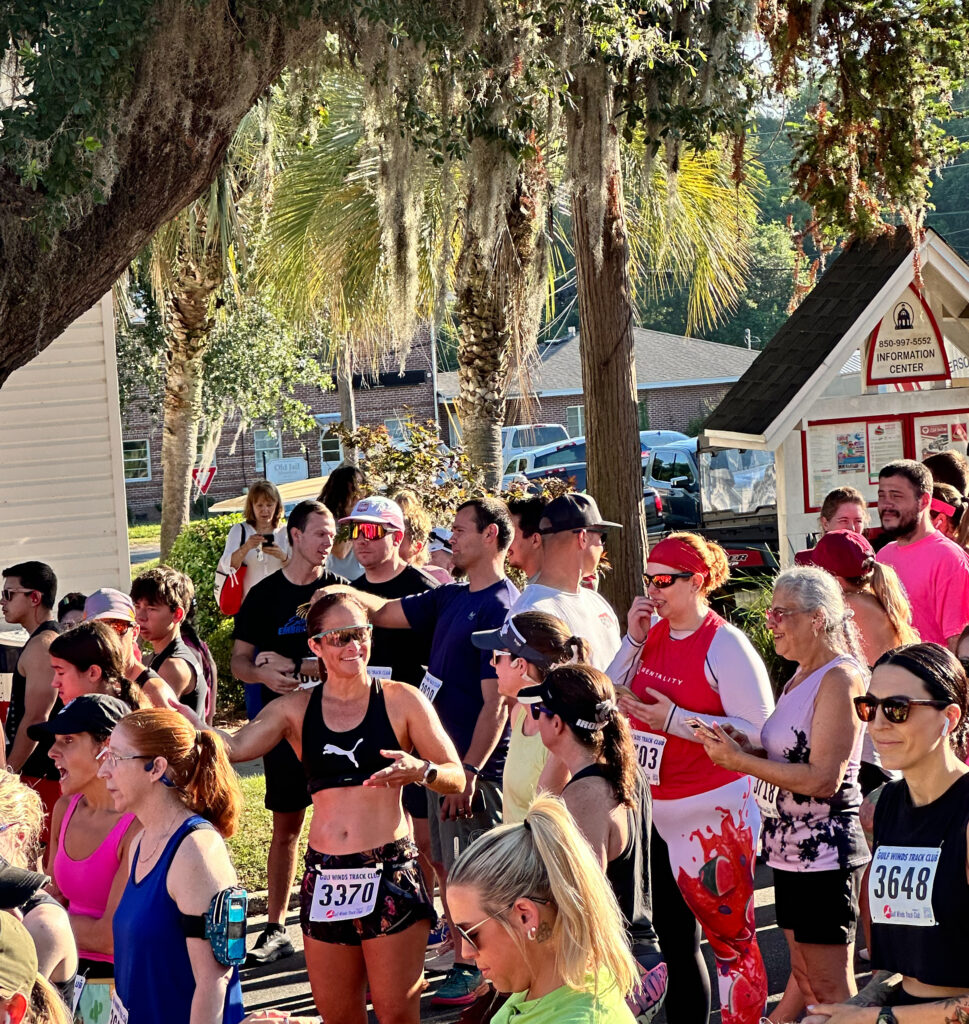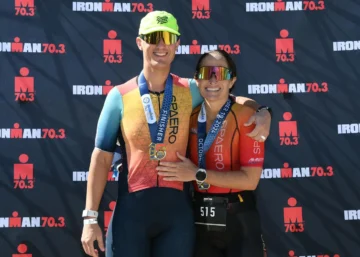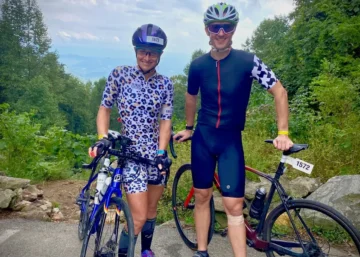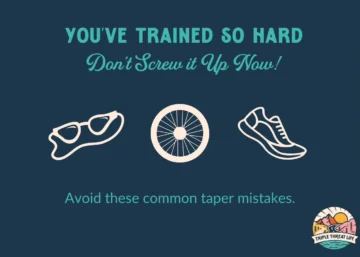
Over the weekend, I ran a local 5K. But not just any 5K- the Monticello Kiwanis Club Watermelon 5K Run– a name longer than the race itself.
As I stood on the start line waiting for the race to begin, I chatted with a few of my friends. We talked about new race shoes, the unfairness of running in 100% humidity, and the intimidating hills that were to come. (Seriously, I was lied to. These were not hills. It was a freaking mountain all the way up to the finish line.)
We also talked about pacing and how hard it is.

This is the start of my sixth year competing in triathlon. I started running one year before I did my first triathlon, so I’ve done far more triathlon runs than stand-alone running races.
For example, I’ve run one stand-alone half marathon, but I’ve done six half marathons during six 70.3 triathlons. I haven’t run a stand alone marathon, but I ran a marathon at the end of an Ironman.
Sure, there’s always a local Turkey Trot 10K or 5K you can pop into on the weekend; but for triathletes, most of our running races take place as the third discipline of a triathlon.
In this case, pacing becomes considerably more challenging. Not only do you have to pace the run itself, but every event that comes before it. You have to swim hard enough, but not too hard so you’re gassed by the time you get on the bike. Then, you have to bike hard enough, but not too hard so you don’t have anything left for the run.
There are a few different strategies for pacing the run.
First, there’s running even splits. With this method, if you wanted to maintain a 7:30 average pace for a 5K, you’d try to hold steady at that pace for the entire race.
Then, there’s the “hold on for dear life” strategy where you start out hard and try your best to hold on until the finish. Not necessarily advisable, but it works for some (if you have the legs and lungs for it and believe in a bit of race day magic.)
Finally, there’s negative split, where the second half of the run is faster than the first half. This is generally considered to be the best method for pacing distances ranging from 5K to half marathon. But it’s not easy.
Accomplishing a negative split is hard because there are so many outside elements that can complicate matters. First, there’s the weather. Heat and humidity will affect your sweat rate and breathing capacity, which will affect the pace you can run. Also, course terrain might change your pacing strategy. What happens if the second half of the race is stacked with hills?
How you feel on the day can also affect pacing. Sometimes, if I feel like there’s not much left in the tank when I get off the bike, I’ll just try to even split where I stick to a pace I think I can hold for the entire distance.
Pacing might also be affected by how you think as an athlete. My husband is a pro at executing a negative split. He can knock off 10-15 seconds a mile, perfectly, every time, like clockwork. He’s also been running for 15 years, so the experience factor plays into that as well, but it’s also just how he thinks. He’s a very analytical person.
In talking with my coaches about some good pacing advice for this particular 5K, they said:
Coach A- “Start the first mile conservative and build from miles 2-3. You shouldn’t be gassed at mile 1.”
Coach B- “You should feel like dog@#$% from mile 1.5 on.”
Same basic negative split theory, just different methods of delivery.
Now pacing strategy does vary depending on the distance of the running race or triathlon you’re doing, but I find that I’m better at pacing a long distance event. The half marathon is the easiest distance for me to achieve a negative split, probably because it’s the distance I have the most experience with.
But I think it also has to do with the distance itself.
It’s easier to moderate effort over the course of 13.1 miles, as opposed to 3.1 miles, because you have more time to work with and the speed increase can be more incremental.
The hardest distances for me to pace correctly are the 5K and 10K, because the effort is intense throughout. In this way, it’s difficult to distinguish between fast-comfortable, fast-moderate, and fast-hard. In contrast, it’s much easier for me to run easy, moderate, and hard. Working on developing my “fast range” is something we’re doing this summer, hence the 5K.
My coach gives me all different types of running workouts. Sometimes, we do hill repeats for strength, intervals for speed, and long runs for low heart rate and durability. But no matter the type of run, there’s always an element of pacing.
For example, I might have an 8-mile long run that’s divided into four blocks: 1/4 at easy, aerobic, 1/4 at half marathon pace, 1/4 at 10K pace, and 1/4 at 5K pace. This type of negative split run is really hard to do, but it’s important because the only way to get better at pacing is to practice.
If you start out running the first sections too fast, it’s going to really hurt by the end.
When I first started running, I used to get frustrated if messed up a perfect negative split. I later learned that while it’s impressive-looking to create a perfect step down, that’s not always possible (for example in a marathon) or necessary. My coach explained that instead of being so focused on achieving a negative split by mile, a better strategy was to make the second half of the run faster than the first half.
There’s no award given to the athlete who runs a perfect negative split. The prize is given to the athlete who gets to the finish line first.
What helps me the most is to have a pace goal for the start of the run, especially if it’s a run off the bike. Sometimes that number might have to change a bit depending on the weather, how the bike went, the heat, ect. But if I have a good starting point, it helps give me a plan for how to get to the finish.
What about you? Do you struggle with pacing?
My next author’s Q&A will be with Matt Fitzgerald where we will talk about his new book- How to Run the Perfect Race: Better Racing Through Better Pacing. Yes, this is the Matt Fitzgerald, the same guy who wrote the wildly popular 80/20 Running, Iron War, The Comeback Quotient, Life is a Marathon and many more. I’m really excited to read his book to see if I can pick up any pearls of wisdom to help with my pacing.
Stay tuned…


